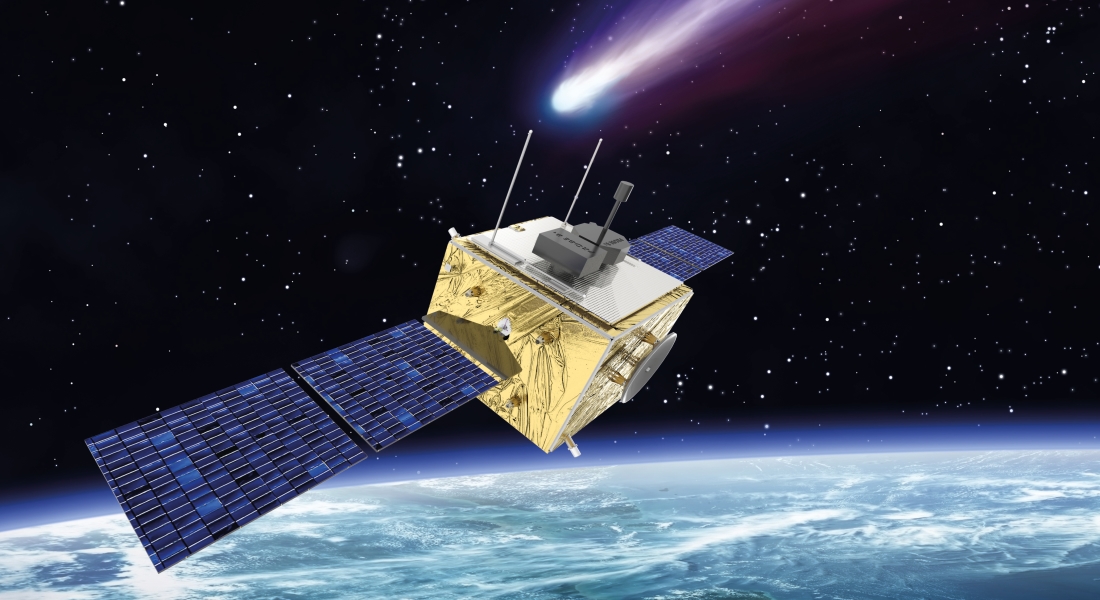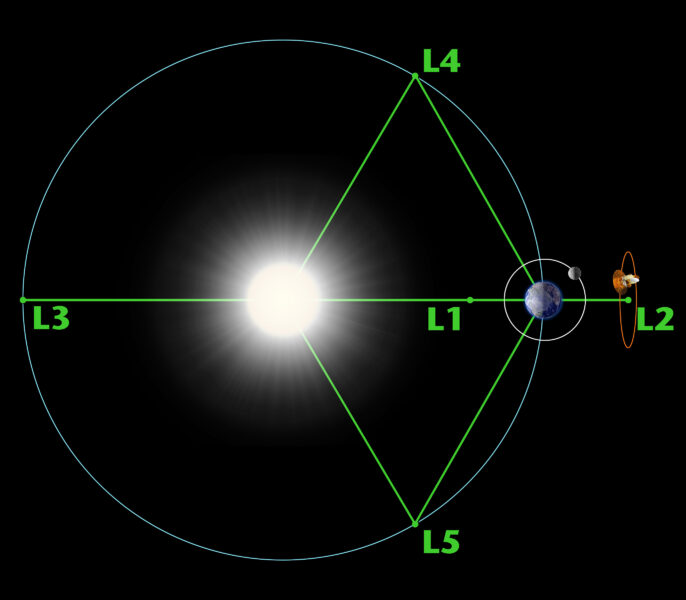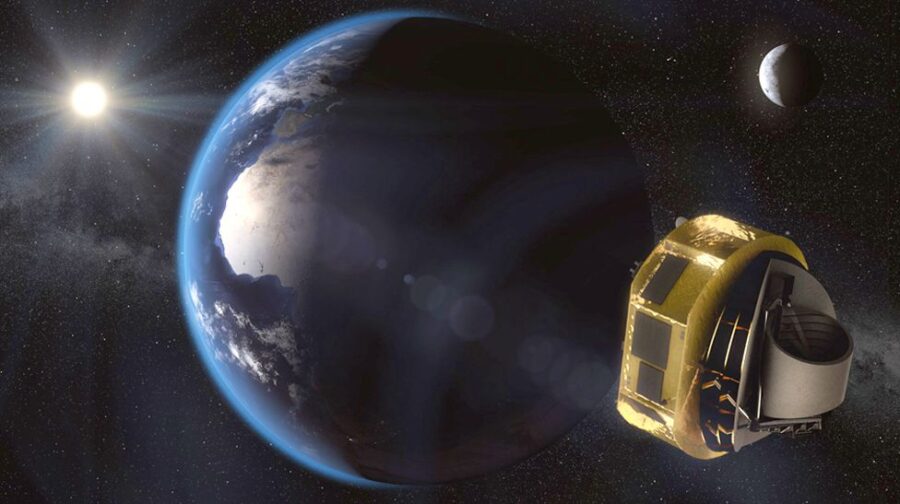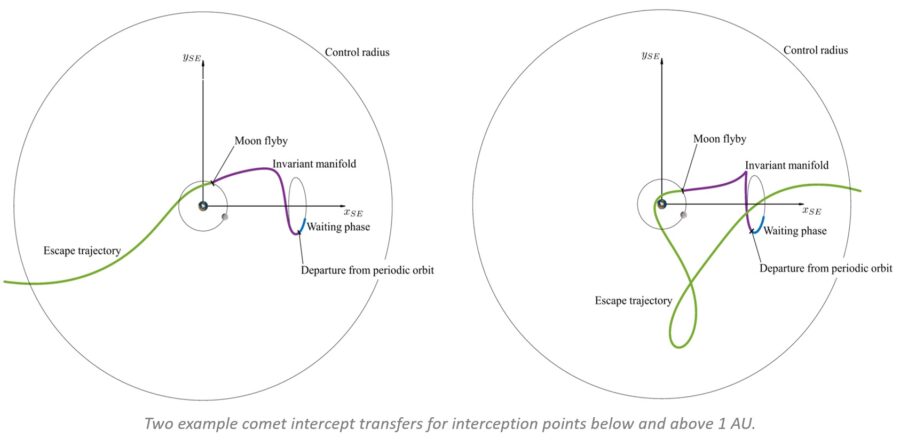How will engineers plan the trajectory of Comet Interceptor, a mission designed to fly by an interstellar visitor, when its target is still unknown?

Thales Alenia Space
The European and Japanese space agencies plan to have a mission in space to meet a pristine visitor from the outermost reaches of the solar system within this decade. But designing a trajectory for such a spacecraft is tricky when the target is still unknown.
The mission is Comet Interceptor, the first F-class (fast-class) mission, selected in 2019 under the European Space Agency (ESA) Cosmic Vision program. The mission would launch in 2029, hitching a ride with the Ariel exoplanet mission. They'll head together to the second Sun-Earth Lagrange point (L2), which is 1.5 million kilometers (900,000 miles) "behind" Earth relative to the Sun.

NASA/WMAP Science Team
The Comet Interceptor mission will stay attached to Ariel until a suitable target is found: either a long-period comet inbound from the Oort Cloud, or just maybe, an interstellar asteroid or comet.
Interstellar objects are a recent find, and a hot topic of study. On October 19, 2017, the PanSTARRS survey spied the first confirmed interstellar object to pass through the inner solar system, 1I/‘Oumuamua. But ‘Oumuamua was already on its outbound leg on discovery, and it was moving so fast that there was no chance to launch a mission in pursuit.
In 2019, a Crimean amateur astronomer discovered Comet 2I/Borisov, another interstellar object, this one trailing a coma of sublimating gases behind it. Though first seen on its inbound journey, Borisov was already at perihelion a month after the first images were taken, and within a few months had already reached Jupiter's orbit on its way back out of the solar system.

ESA
To make the pursuit of such fast-moving objects a reality, a spacecraft would ideally already be in space. But that means launching a mission without a definite target. With two interstellar objects in three years, though, targets are likely plentiful. And with the Rubin Observatory and other sky surveys expected to see first light in the coming years, the population of known interstellar objects is only expected to grow.
The team expects to see a suitable target for Comet Interceptor to chase down within six years after launch. (If a target isn’t found, Comet Interceptor could also be sent past short-period comet 73P/Schwassmann-Wachmann.)
Now, the team is previewing the complex trajectories the mission could take to reach such a target, depending on a number of factors. This analysis will appear in Acta Astronautica (preprint available here).
Getting There
The team considered trajectories assuming they’d get a ‘go’ between 400 and 1,000 days out. The further in advance the comet is discovered, the more options the team will have for the flyby trajectory.
However, the team must also take propulsion into account. The team will finalize the propulsion design by 2022, either incorporating a traditional liquid-fuel chemical rocket, solar-electric propulsion, or a hybrid design of the two. Each has the trade-off of weight versus thrust.
The mission will begin by loitering in a Lissajous ‘halo’ orbit around the L2 point. But once a suitable target is found, the chase is on. Comet Interceptor will separate from Ariel and execute a complex orbital ballet of lunar and Earth flybys that will inject it into a heliocentric orbit. The mission will need to meet its intended target along the ecliptic plane for a fast flyby, similar to New Horizons’ 2015 encounter with Pluto.
“The selected trajectory will of course depend on the location of the encounter: where the comet is crossing the ecliptic plane,” says principal investigator Geraint Jones (University College London). “This can involve the spacecraft leaving L2 to travel ‘ahead’ of Earth in its orbit, or to trail Earth’s motion.” To this end, a close lunar flyby on departure could be useful, especially in the scenario of kicking the spacecraft ahead of Earth en route to the encounter.

Mullard Space Science Laboratory.
“The actual flyby speed would depend on the orbit of the target comet,” says Jones. “It could be as relatively low as 10 kilometers per second, or as high as 70 kilometers per second.”
At closest approach, Comet Interceptor will separate, releasing two probes (one from the Japanese Aerospace Exploration Agency and the other from ESA) from the main spacecraft to sample the gases, dust, plasma, and magnetic fields around the object.
Closer views of an interstellar object or long-period comet can teach us about planet formation and solar system history. Within the next 10 to 15 years, Comet Interceptor will take the path necessary to deliver those views.
 5
5









Comments
Anthony Barreiro
August 3, 2021 at 5:02 pm
Orbital mechanics is fascinating! Sending a spacecraft to a known point in the solar system is quite a feat. Figuring out how to get one ready to go anywhere along the ecliptic plane on short notice must have been a lot of fun.
In the "Two Possible Scenarios" figure, there are yse and xse axes. It looks like xse is the direction from the Sun through the Earth to L2, and yse is Earth's direction of travel in orbit around the Sun. Presumably we're looking down the zse axis from Earth's ecliptic north pole. I'm just curious, what does "se" stand for?
You must be logged in to post a comment.
David DickinsonPost Author
August 4, 2021 at 9:39 am
In the paper, SE stood for 'Sun-Earth,' as in Sun-Earth Lagrange Point. I had to decipher that one reading through the study, too.
You must be logged in to post a comment.
Anthony Barreiro
August 4, 2021 at 1:26 pm
Thanks David!
You must be logged in to post a comment.
Sheraz
August 5, 2021 at 5:41 am
As per my basic knowledge of Physics, I understand that for a very fast moving object in space a strong centripetal force (e.g. gravity of a star or a planet) is required to keep the object in an orbital path.
I wonder how the Comit Interceptor would maintain its orbital path (Halo orbit) at L2 as there is no gravitational object at the centre of this "halo orbit" providing the must needed centripetal force.?
You must be logged in to post a comment.
Monica Young
August 5, 2021 at 12:04 pm
You might find this article helpful: https://en.wikipedia.org/wiki/Halo_orbit. Basically, it's easier to orbit these points even though there's no object there, but the orbits are unstable and do require maintenance.
You must be logged in to post a comment.
You must be logged in to post a comment.